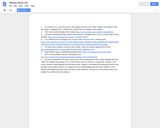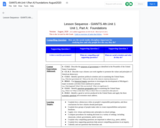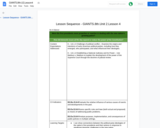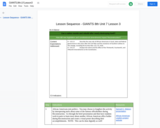7– W3.1.1 Describe the characteristics that classical civilizations share (e.g., institutions, cultural styles, systems of thought that influenced neighboring peoples and have endured for several centuries).
7 – W3.1.2 Using historic and modern maps, locate three major empires of this era, describe their geographic characteristics including physical features and climates, and propose a generalization about the relationship between geographic characteristics and the development of early empires. (G)
7– W3.1.3 Compare and contrast the defining characteristics of a city-state, civilization, and empire. (C)
7 – W3.1.4 Assess the importance of Greek ideas about democracy and citizenship in the development of Western political thought and institutions. (C)
7 – W3.1.5 Describe major achievements from Indian, Chinese, Mediterranean, African, and Southwest and Central Asian civilizations. (G)
7 – W3.1.6 Use historic and modern maps to locate and describe trade networks among empires in the classical era. (G)
7 – W3.1.7 Use a case study to describe how trade integrated cultures and influenced the economy within empires (e.g., Assyrian and Persian trade networks or networks of Egypt and Nubia/Kush; or Phoenician and Greek networks). (G, E)
7 – W3.1.8 Describe the role of state authority, military power, taxation systems, and institutions of coerced labor, including slavery, in building and maintaining empires (e.g., Han Empire, Mauryan Empire, Egypt, Greek city-states and the Roman Empire). (C)
7 – W3.1.9 Describe the significance of legal codes, belief systems, written languages and communications in the development of large regional empires.
7 – W3.1.10 Create a timeline that illustrates the rise and fall of classical empires during the classical period.
7 – W3.1.11 Explain the role of economics in shaping the development of classical civilizations and empires (e.g., trade routes and their significance, supply and demand for products). (E)
7 – W3.2.1 Identify and describe the beliefs of the six major world religions.
7 – W3.2.2 Locate the geographical center of major religions and map the spread through the 3rd century C.E./A.D. (G)
7 – W4.1.1 Crisis in the Classical World -- Analyze the environmental, economic and political crisis in the classical world that led to the collapse of classical empires and the consolidation of Byzantium. (C. G, E)
7 – W4.1.2 World Religions -- Using historical documents and historical and current maps, analyze the spread and interactions of major world religions from 300-1500 C.E. (G)
7 – W4.1.3 Trade Networks and Contacts – Analyze the development, interdependence, specialization, and importance of interregional trading systems both within and between societies including
• land-based routes across the Sahara, Eurasia and Europe
• water-based routes across Indian Ocean, Persian Gulf, South China Sea, Red and Mediterranean Seas (G)
7 – G1.2.1 Explain why maps of the same place may vary as a result of new knowledge and/or advances in science and technology.
7 – G4.4.1 Identify and explain factors that contribute to conflict and cooperation between and among cultural groups (e.g., natural resources, power, culture, wealth).
7 – G4.4.2 Describe examples of cooperation and conflict within the era understudy
7 – C1.1.1 Compare and contrast principles and competing ideas about the purposes of government in historical societies.
7 – C1.1.2 Examine what it has meant to be a citizen in the era under study.
7 – C3.6.2 Compare and contrast various forms of government in the eras under study.
7 – C4.3.1 Explain how governmental systems addressed issues and formed policies throughout history and how those policies may not be consistent with our views on similar issues today.
7 – C4.3.2 Analyze the impact of laws and treaties on the maintenance of order in the eras under study.
7 – E2.3.1 Explain how governments during the eras under study made decisions that impacted the economy of that society and other societies.
7 – E3.1.1Explain some of the economic, social and political factors influencing the movement of people among regions during the eras under study.



















